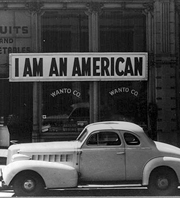Author: Jeff Garvin
Publication Date: February 2, 2015
Publisher: Balzer + Bray
Genre: Realistic fiction
Genre: Realistic fiction
Pages: 352
Age Rating: Readers over 13
My Opinion: 8/10
Hi, Readers!
After finishing my summer job, I have had a couple of weeks at home to relax before heading back to school. Ever since I've gotten home, I've been a reading machine! I've read more pleasure books in these past two weeks than I did the entire school year. One novel that I found particularly intriguing was Symptoms of Being Human, by Jeff Garvin. It focuses on a subject that I was entirely unaware and uneducated about - being gender fluid.
Having a congressman for a father does not make life easy for Riley, and switching to a new school allows for a fresh start with new classmates. Although it takes a few days, Riley finds a couple of quirky friends that are accepting and welcoming. However, other classmates - football players and their girlfriends - act particularly menacing towards Riley. Why is this? They attempt to determine Riley's gender in a negative manner. When Riley's therapist suggests starting an anonymous blog to share thoughts and feelings, Riley decides to give it a try and finds it extremely helpful. However, Riley's true identity gets out and animosity begins to spread. Riley has to decide whether to become brave enough to take a stand for gender fluidity or to sink back into the shadows.
Wow, I have to say, writing that novel summary was much harder than most. This is because I attempted to write the entire thing without using gender pronouns referring to Riley, as Garvin does throughout the entirety of the novel. It is much harder than it looks, and my summary seems to dramatically overuse Riley's name in place of any pronouns. Somehow, Garvin manages to write all 352 pages without saying she/he as pertaining to Riley's gender, and the result is phenominal. At times, I found myself wondering if Riley was truly a boy or a girl. But then I discovered that was the point of the novel. It doesn't matter what gender Riley was born as because that is not what Riley identifies with.
 |
| Whatever., by S.J. Goslee |
I certainly learned a lot about the topic of gender fluidity. I was vastly uninformed, and I feel that Garvin handled the heavy concept of gender identity with respect and awareness. I also recently finished reading the novel, Whatever., by S.J. Goslee, which is about a teen named Mike who discovers he is gay. Although the novels are uncomparable as pertaining to characters and writing styles (and no offense to Goslee - your novel was hilarious), I can honestly say that I think Garvin was more respectful than Goslee in his approach of the subject. By taking care to write an accurate, and more importantly, serious, plot line, Garvin spreads information about gender fluidity.
Frankly speaking, I'm glad I decided to pick Symptoms of Being Human off the shelf of new novels at the public library. It wasn't one of the typical comedic or fantasy novels that I typically gravitate towards, and I knew that solely based on reading the inside cover. I wasn't sure how I would feel about the gender identity discussions, and I didn't feel in my comfort zone , but I learned a lot and my eyes were opened. I'm glad I gave it a shot, and I recommend you do the same.
Happy reading, and best of luck to everyone in the new school year!
























